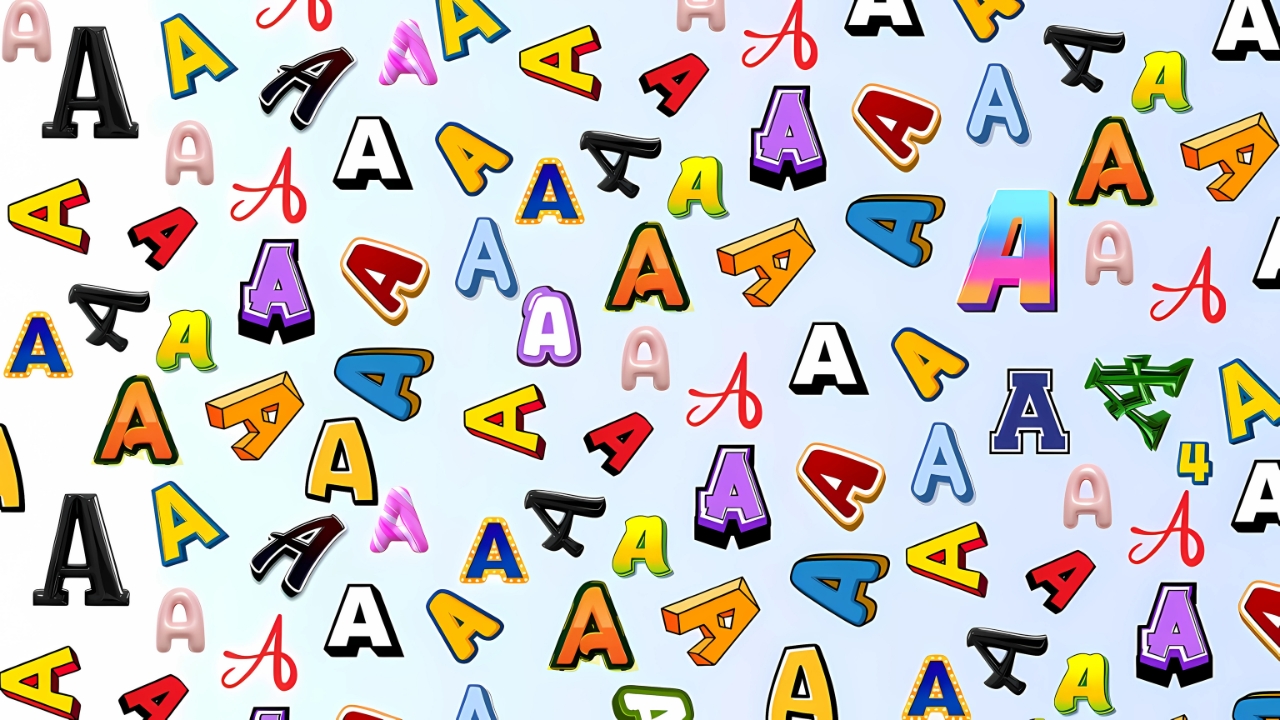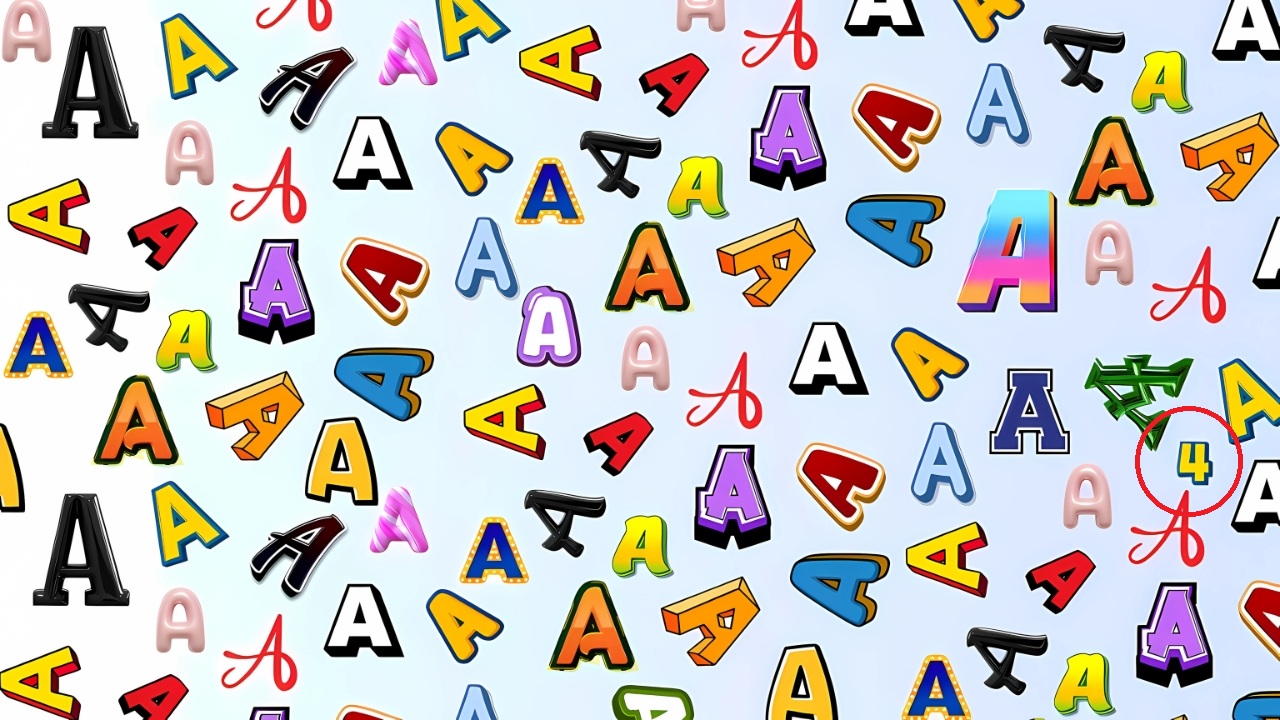Spot the Hidden 4 : Optical illusions have long fascinated people around the world, blending art, psychology, and science into a captivating experience. They challenge our perception, making us question what we see and how our brains interpret visual information.
Today, we’re diving into a specific optical illusion that has been making waves online: the Australia Optical Illusion. In this challenge, your task is to find a hidden number 4 amidst a sea of colorful letter A’s—all within a tight 5-second window. Let’s explore this illusion, understand why it’s so tricky, and uncover tips to help you spot the hidden 4.
Whether you’re a puzzle enthusiast or just looking for a fun mental workout, this article will guide you through every detail of this intriguing visual challenge.
What Is the Australia Optical Illusion?
The Australia Optical Illusion is a visual puzzle that tests your observation skills and mental agility. The image features a light blue background filled with numerous letter A’s in various fonts, colors, and orientations.
The A’s are scattered in a seemingly random pattern, with colors ranging from red, yellow, and blue to pink, purple, and black.
Some A’s are bold and blocky, while others are cursive or stylized, adding to the visual complexity. Hidden somewhere in this chaotic arrangement is a single number 4, cleverly disguised to blend in with its surroundings.

The challenge is simple yet deceptively difficult: you have just 5 seconds to locate the number 4. This time constraint adds an element of pressure, making the task feel like a race against the clock.
Optical illusions like this one play tricks on our brains by exploiting how we process visual information, often causing us to overlook details that don’t fit the dominant pattern—in this case, the sea of A’s.
Why Are Optical Illusions So Challenging?
Optical illusions are more than just fun games; they reveal fascinating insights into how our brains work. When you look at the Australia Optical Illusion, your brain immediately recognizes the dominant pattern: the letter A repeated over and over.
This phenomenon is known as “visual grouping,” where the brain groups similar objects together to make sense of a scene. The colorful and varied A’s create a strong visual rhythm, making it harder to notice anything that breaks the pattern, like the number 4.
Additionally, the time limit of 5 seconds taps into a cognitive process called “selective attention.” Under pressure, your brain prioritizes speed over accuracy, often causing you to miss subtle details.
The 4 is designed to blend in—it might be in a similar color or font style to the surrounding A’s, or it might be rotated to look less like a number and more like part of the pattern. This combination of visual noise, time pressure, and clever design makes the challenge surprisingly tough, even for those with sharp eyes.
The Science Behind Optical Illusions
Optical illusions exploit the way our visual system interprets information. The human brain is wired to fill in gaps and make assumptions based on past experiences. For example, if you’re used to seeing the letter A in a certain context, your brain might automatically ignore anything that doesn’t fit that mold. This is called “perceptual bias.”
In the Australia Optical Illusion, the number 4 is camouflaged to take advantage of this bias, blending into the background of A’s so your brain skips over it.
Another factor at play is “figure-ground organization,” which refers to how we distinguish an object (the figure) from its background (the ground). In this illusion, the number 4 is part of the “ground” of A’s, making it harder to single out as a distinct “figure.”
The colors, fonts, and orientations of the A’s further complicate this process, creating a visual overload that distracts from the target.
How to Spot the Hidden 4 in the Australia Optical Illusion
Finding the number 4 in just 5 seconds might seem daunting, but with the right approach, you can improve your chances. Here are some practical tips to help you succeed:
Tip 1: Change Your Focus
Instead of focusing on the A’s, try to look for something that doesn’t belong. Shift your gaze across the image quickly, scanning for any shape that deviates from the letter A. The number 4 has distinct features—like its sharp angles and straight lines—that set it apart from the more rounded or slanted shapes of the A’s.
Tip 2: Look for Color and Orientation Clues
The 4 might be in a color that blends with the surrounding A’s, but its orientation could give it away. For example, if most of the A’s are upright, a rotated 4 might stand out. Pay attention to any shapes that look out of place, even if they’re subtle.
Tip 3: Divide and Conquer
Mentally divide the image into sections and scan each one systematically. Start from the top left and move across, or focus on the edges first and work your way inward. This method helps you cover the entire image without getting overwhelmed by the visual clutter.
Tip 4: Relax Your Eyes
Sometimes, staring too hard can make you miss the obvious. Try softening your gaze or looking slightly away from the image to let your peripheral vision pick up on the anomaly. This technique can help you spot the 4 when your brain stops overanalyzing the A’s.
Where Is the Hidden 4 Located?
If you’ve been scanning the image and still can’t find the 4, don’t worry—I’ll give you a hint. The number 4 is located toward the bottom right quadrant of the image. It’s in a bold, green font with a slight 3D effect, positioned at an angle that makes it blend in with the nearby A’s.
If you look closely, you’ll notice its distinct shape: a straight vertical line with a shorter horizontal line crossing it, unlike the triangular structure of the A’s.
Why This Challenge Is Perfect for Brain Training
The Australia Optical Illusion isn’t just a fun activity—it’s also a great way to exercise your brain. Challenges like this improve your visual perception, attention to detail, and cognitive speed.
They can also enhance your problem-solving skills by teaching you to think outside the box and approach problems from different angles. Plus, the satisfaction of finding the hidden 4 in just 5 seconds is a rewarding boost to your confidence!
Fun Facts About Optical Illusions
To give you a deeper appreciation for optical illusions, here’s a table with some interesting facts:Optical Illusion Answer

Frequently Asked Questions (FAQs)
What makes the Australia Optical Illusion so hard?
The illusion is difficult due to the overwhelming number of A’s, the variety of colors and fonts, and the time pressure of 5 seconds, which exploits your brain’s tendency to focus on patterns.
Can everyone spot the hidden 4?
Not everyone will spot it within 5 seconds, as it depends on individual visual perception and attention skills. Practice can improve your ability over time.
Are optical illusions good for your brain?
Yes, they enhance cognitive skills like observation, focus, and problem-solving, making them a fun way to train your brain.
Test Your Skills Today!
The Australia Optical Illusion is a delightful blend of challenge and entertainment, pushing you to test the limits of your perception in just 5 seconds. Whether you found the hidden 4 on your first try or needed a hint, this puzzle is a reminder of how fascinating and complex our brains are.
Optical illusions like this one aren’t just games—they’re windows into the science of vision and cognition. So, the next time you come across a visual puzzle, take a deep breath, sharpen your focus, and dive in. You might be surprised at what you discover!
ALSO READ: Optical Illusion Challenge: Find the Goat Owner in a Flash
